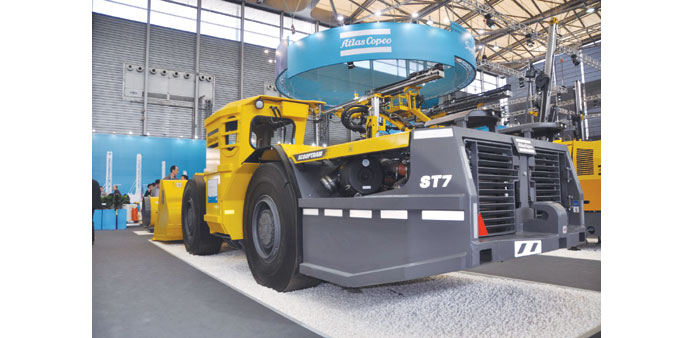Atlas Copco’s interest in new assembly technologies has been spurred by a trend among car makers to use more aluminium to reduce the weight of their vehicles.
Reuters
Swedish engineer Atlas Copco is investing in new techniques for assembling cars, believing powerful adhesives and new rivets could see a surge in demand as automakers strive to reduce the weight of vehicles to meet emissions targets.
After its 2011 purchase of SCA, a maker of adhesives dispensing gear, Atlas Copco last month snapped up Henrob, a specialist in self-pierce riveting, a method of joining one or more sheets of material together without pre-drilled holes.
And Mats Rahmstrom, head of Atlas Copco’s Industrial Technique business area, told Reuters it was on the lookout for more acquisitions to add new technologies.
“Among those (technologies) that are attractive and large enough, there may be 2-3 more out there that we could consider adding to our portfolio,” he said, declining to elaborate.
Atlas Copco’s interest in new assembly technologies has been spurred by a trend among carmakers to use more aluminium to reduce the weight of their vehicles. As aluminium can be difficult to weld, carmakers have turned to alternatives including powerful adhesives and self-pierce riveting. “There is a strong correlation between aluminium use and self-pierce riveting, and some other technologies,” Rahmstrom said in an interview.
“And we obviously think that the trend points to increasing use of aluminium over time, which you also see in studies where there has been a significant increase in the past 4-5 years, in particular when it comes to doors and hoods.”
A study last year by consultancy firm Ducker Worldwide and the European Aluminium Association showed the amount of aluminium used per car produced in Europe almost tripled between 1990 and 2012, increasing from 50 kilogrammes to 140 kg.
“This amount is predicted to rise to 160 kg by 2020, and even reach as much as 180 kg if small and medium cars follow the evolution recorded in the upper segments of the automobile industry,” the study said.
While the major use of aluminium up until now has been in premium car models, a potential game changer came when Ford — a Henrob customer — announced the 2015 model of its top-selling pickup truck F-150 would come with an aluminium body.
“The potential could be enormous. I wouldn’t be surprised if the total market for self-pierce riveting doubled when Ford went in with their programme,” Rahmstrom said. “It’s so significant, and obviously other players are looking at what Ford is doing, asking themselves how they are going to reduce weight,” he added.
SCA has already seen annual sales double to about €130mn ($168mn) since 2010. Together with Henrob, the acquisition of which seen closing in the third quarter, it will make up about a fifth of sales in Atlas Copco’s Industrial Technique unit.
That in turn had sales of 5.2bn Swedish crowns ($726mn) in the first half of 2014 out of a group total of 44.8 bn, and an operating margin of 22.1% compared with a group total of 18.1%.
Rahmstrom is not taking anything for granted, however, noting Henrob’s business is primarily built around just three to four major customers, including Ford and Jaguar, and the length of time taken to develop new cars.
Henrob also faces competition from the likes of Stanley Black & Decker and privately-owned German firm Bollhoff.
“We have followed this company (Henrob) since the mid-2000s, and first there was nothing, then nothing, and after that they have had a fantastic development,” Rahmstrom said, referring to a recent surge in demand, helped by Ford’s decision.
“So the important thing will be how many will choose to go down this road.”



